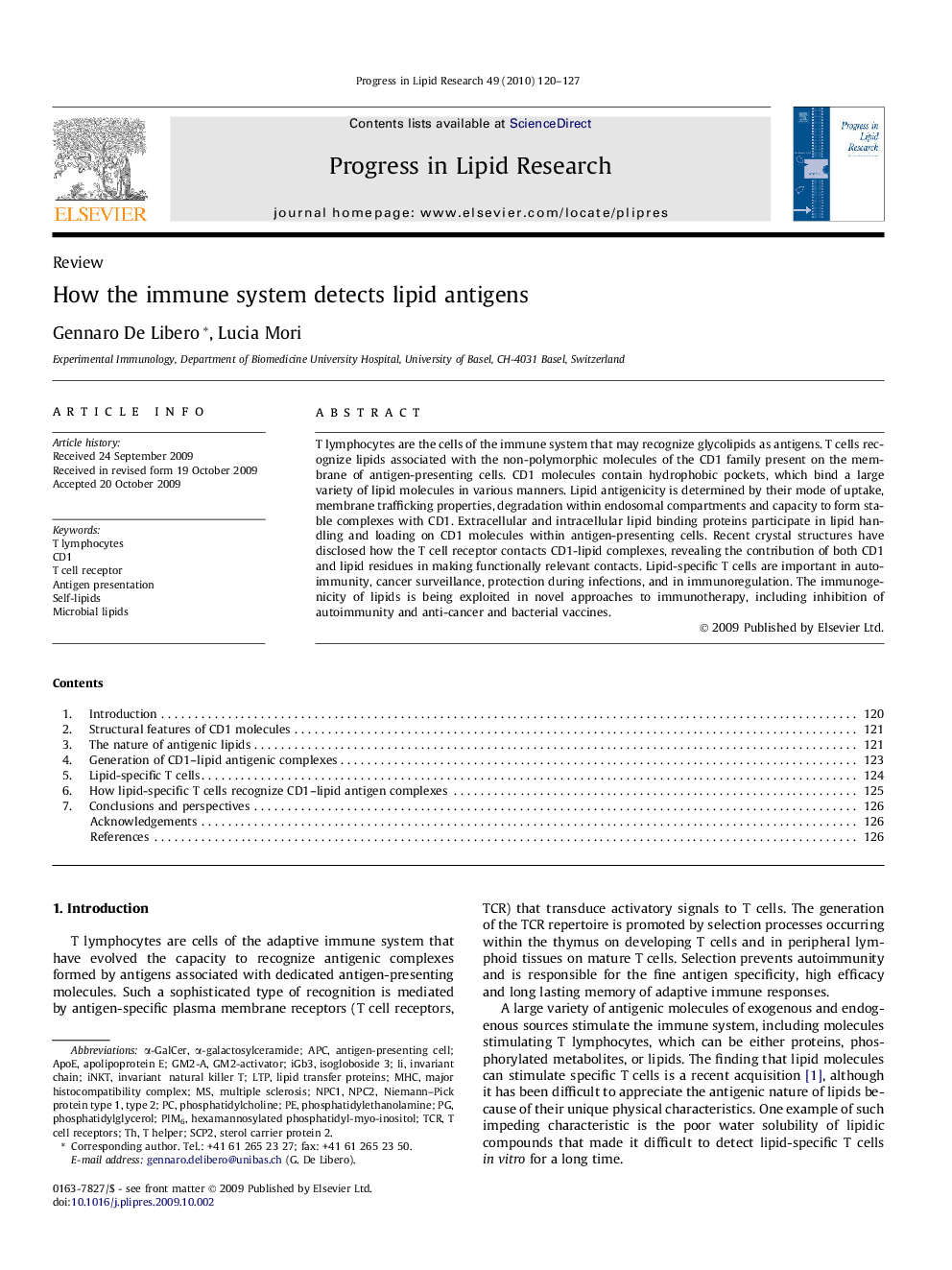| Article ID | Journal | Published Year | Pages | File Type |
|---|---|---|---|---|
| 2019228 | Progress in Lipid Research | 2010 | 8 Pages |
T lymphocytes are the cells of the immune system that may recognize glycolipids as antigens. T cells recognize lipids associated with the non-polymorphic molecules of the CD1 family present on the membrane of antigen-presenting cells. CD1 molecules contain hydrophobic pockets, which bind a large variety of lipid molecules in various manners. Lipid antigenicity is determined by their mode of uptake, membrane trafficking properties, degradation within endosomal compartments and capacity to form stable complexes with CD1. Extracellular and intracellular lipid binding proteins participate in lipid handling and loading on CD1 molecules within antigen-presenting cells. Recent crystal structures have disclosed how the T cell receptor contacts CD1-lipid complexes, revealing the contribution of both CD1 and lipid residues in making functionally relevant contacts. Lipid-specific T cells are important in autoimmunity, cancer surveillance, protection during infections, and in immunoregulation. The immunogenicity of lipids is being exploited in novel approaches to immunotherapy, including inhibition of autoimmunity and anti-cancer and bacterial vaccines.
